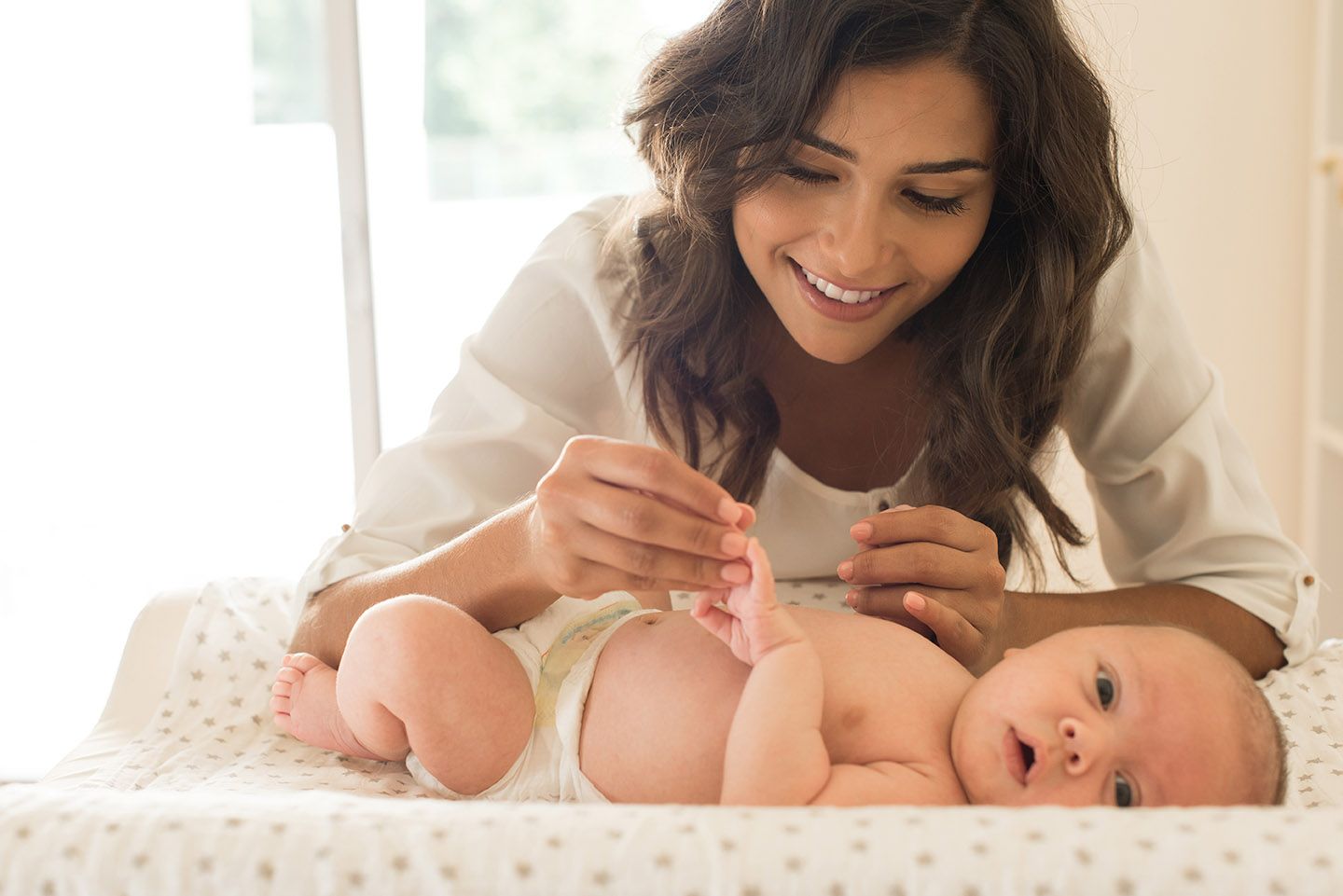What Is the Safest Humidifier for Baby?

Your baby's skin is dry, their nose is stuffy, and someone told you a baby humidifier would help. But now you're staring at dozens of options wondering which cool mist humidifier or steam humidifier won't become a mold factory in your nursery. We'll break down what actually matters for safety so you can stop second-guessing and start helping your little one breathe easier.
Why Parents Use Humidifiers (And Why Safety Comes First)
Dry air makes everything harder for babies. You've probably noticed your little one waking up with a stuffy nose, developing dry skin patches, or coughing more at night. A humidifier for baby rooms can genuinely help with these issues, but the tricky part is knowing which one is actually safe.
Here's what the right humidity level does:
1. Clears stuffy noses faster. Moisture thins out thick mucus so it drains naturally instead of blocking tiny nasal passages.
2. Stops dry, itchy skin. Proper humidity keeps your baby's delicate skin from cracking and getting irritated.
3. Reduces nighttime coughing. Moist air soothes scratchy throats so everyone sleeps better.
4. Keeps the air comfortable at 40-50% humidity. This sweet spot prevents both dry air problems and mold growth.
But here's the worry: what if your nursery humidifier spreads bacteria or creates other problems? Some humidifiers can actually make the air quality worse if they're the wrong type.
3 Hidden Dangers in Baby Humidifiers
1. The Germ Problem
Similar to a water bottle left in your car, water in a tank quickly becomes slimy. Within 24 hours, mold and bacteria begin to proliferate.
The main problem is that a lot of cool mist humidifiers release this tainted water as a fine mist into the atmosphere. Throughout the night, your infant inhales it. Babies are more susceptible to illness than adults, so rather than improving your child's breathing, you may be contributing to the spread of viruses.
2. The Problem of White Dust
Near your humidifier, do you see that fine white powder on the furniture? These are minerals that were released into the atmosphere from tap water.
Calcium and other minerals are broken down into microscopic particles that float through the air by ultrasonic cool mist humidifiers. These can irritate your baby's airways because they are inhaled by their lungs.
3. The Burn Risk (Mostly Fixed Now)
Old vaporizers could burn kids badly, and that fear still stops parents from considering steam humidifiers.
The difference is that contemporary steam humidifiers chill the steam to roughly 50°C before releasing it, making it warm like shower steam rather than hot like boiling kettle steam. While maintaining the advantages of boiling, germ-free water, models with "temperature control" or "safe-touch steam" have resolved the long-standing burn issue.
Types of Baby Humidifiers: What You Need to Know
Cool Mist Ultrasonic Humidifiers
Ultrasonic humidifiers vibrate water so fast that it turns into a fine, cool mist. Parents like them because they're nearly silent and use little electricity.
The problem: the tank needs daily cleaning or bacteria spreads into your nursery air. They also leave white dust everywhere unless you use distilled water. If you skip cleaning for a few days, you're spraying germs into your baby's room.
Best for: Parents who can commit to daily scrubbing and buying distilled water.
Evaporative Humidifiers
Evaporative humidifiers blow air through a wet filter, and water naturally evaporates into the room. They can't over-humidify (the air only takes what it needs) and don't create white dust.
The downside: the wet filter grows mold and needs replacing every week or two. The fan can also be noisy during sleep. While safer than ultrasonic models, buying filters regularly gets annoying and expensive.
Best for: Parents okay with weekly filter changes and some fan noise.
Steam Humidifiers (Warm Mist)
Steam humidifiers boil water like a kettle, then release steam into the room. Boiling kills 99.9% of germs naturally—no chemicals or daily scrubbing needed. There's no white dust, and regular tap water works fine.
The worry: "Won't hot steam burn my baby?" Modern steam humidifiers cool the steam to 122°F (50°C) before it comes out—warm like shower steam, not scalding. Even if your baby got close, it wouldn't burn them. You get the cleanest mist with the least daily work—just rinse and refill.
Best for: Busy parents who want safe, low-maintenance humidification.
Quick Comparison
|
Feature |
Cool Mist Ultrasonic |
Evaporative |
Steam (Warm Mist) |
|
Kills germs? |
No (unless you clean daily) |
Somewhat (filter dependent) |
Yes (boiling does it) |
|
White dust problem? |
Yes (unless using distilled water) |
No |
No |
|
Daily work |
Clean the whole tank |
Change filter weekly |
Just rinse and refill |
|
Noise |
Almost silent |
Fan hum |
Quiet |
|
Extra costs |
Distilled water adds up |
Filters every 1-2 weeks |
None |
|
Burn risk |
None |
None |
None (with modern 50°C models) |
If you want a nursery humidifier that cleans itself and doesn't need daily attention, modern steam humidifiers with temperature control are your best bet.

Your Baby Humidifier Safety Checklist
When you're comparing models online or standing in the store aisle, focus on the must-haves first—those keep your baby safe.
✅ The 7 Must-Haves (Don't Skip These)
|
Safety Feature |
What to Look For |
Why It Matters |
|
1. Germ Protection |
Boils water OR has UV light |
Stops bacteria from spreading into the air your baby breathes |
|
2. Safe Temperature |
Steam comes out at 50°C or lower (for steam humidifiers) |
Warm to touch, not hot—won't burn if baby gets close |
|
3. Easy Cleaning |
Wide opening—your hand fits inside |
If you can't reach in, you can't clean it properly |
|
4. Right Size |
Covers 300+ square feet |
Small units won't humidify the whole nursery |
|
5. Auto Shut-Off |
Turns off when water runs out |
Prevents overheating and fire risk |
|
6. Quiet |
Under 35 decibels |
Won't wake your baby (quieter than a whisper) |
|
7. Stable Base |
Heavy, wide bottom |
Won't tip over when toddlers bump into it |
Before you buy any humidifier for baby use, ask yourself:
☐ Does it sterilize the water somehow?
☐ Can I actually clean it without tools?
☐ Will it cover my baby's room size?
☐ Does it have the 7 must-haves above?
If you answered "no" to any of these—keep shopping.
A baby humidifier loaded with fancy features means nothing if it doesn't nail the safety basics first. For more on what makes a humidifier truly safe and effective, see our ultimate guide to healthy humidification.
Y&O Steam Plus: Why This Steam Humidifier Stands Out
The Y&O Steam Plus steam humidifier is designed specifically for families with babies and addresses the exact safety concerns parents worry about most.
Here's what sets it apart:
- Complete sterilization process: Heats water to 212°F, killing 99.9% of germs, then cools steam to a comfortable 122°F through dual air ducts before releasing it into your home.
- Large capacity, easy maintenance: The 10-liter system uses two removable 5-liter tanks with wide openings that make weekly cleaning quick and simple.
- Whole-home coverage: With whole house humidifier capacity, it effectively humidifies spaces up to 1,000 square feet—ideal for bedrooms, living rooms, or nurseries.
- No ongoing costs: Filterless design means nothing to replace, just regular cleaning with water and vinegar.
- Smart automation: Built-in humidity sensor with sleep, auto, and powerful modes adjusts output automatically to maintain optimal levels.
The best humidifier keeps air clean without creating extra work—and steam humidifiers like the Y&O Steam Plus deliver on both counts.

How to Use Your Baby's Humidifier Safely
Getting a humidifier for babyis one thing—using it correctly is another. Here's how to set it up and maintain it so it actually helps instead of causing new problems.
Where to Place It
- Keep it 4-8 feet away from the crib. You want moisture spreading through the room, not blowing directly into your baby's face. Too close can make their bedding damp.
- Put it on a dresser or sturdy table. Elevating it helps the mist spread better and keeps it out of reach of curious toddlers. Make sure the surface is stable—you don't want it tipping over.
- Point it away from walls and furniture. If mist hits the wall constantly, you'll get mold or water damage. Aim it toward the center of the room.
Refilling Your Humidifier
- Use the right water. For steam humidifiers, regular tap water is fine since boiling purifies it. For cool mist humidifiers, always use distilled water to prevent white dust and mineral buildup.
- Don't top off—empty first. Each time you refill, empty any remaining water first. Don't just add fresh water to old water. Even a steam humidifier can develop bacteria in standing water that didn't get boiled yet.
- Fill to the line, not beyond. Overfilling can cause leaks or prevent proper operation. Follow your model's maximum fill line.
- Wipe the tank opening. Before putting the tank back, wipe around the opening and base connection with a clean cloth to remove any residue.
Daily Maintenance (Takes 2 Minutes)
Every morning:
1. Empty any leftover water from the tank
2. Give it a quick rinse with clean water
3. Refill with fresh water
Why dump yesterday's water? Because water sitting around grows bacteria fast—even in a steam humidifier. Starting fresh each day keeps things cleaner.
Weekly Deep Clean (Takes 10 Minutes)
Once a week:
1. Fill the tank halfway with white vinegar or citric acid and water
2. Let it sit for 20-30 minutes to break down mineral buildup
3. Scrub all the corners and crevices with a soft brush
4. Rinse thoroughly until there's no vinegar smell left
5. Let it air dry completely before refilling
This prevents mineral deposits and keeps the unit running efficiently.
What Water to Use
- For steam humidifiers: Regular tap water works fine. The boiling process purifies it and kills any contaminants, so you don't need to buy distilled water.
- For cool mist humidifiers: Use distilled water only. Tap water will create white dust all over your nursery furniture and put mineral particles in the air.
How to Know It's Working Properly
- The room should feel comfortable, not sticky. If surfaces feel damp or clammy, you're over-humidifying.
- Check your windows. See condensation or water droplets forming? That means humidity is too high. Turn it down or run it less often.
- Get a hygrometer (they cost about $10-15 online). Keep the nursery between 40-50% humidity. Below 30% is too dry. Above 60% encourages mold growth.
- Your baby should breathe easier. Less congestion, fewer coughs at night, and skin that doesn't look dry or cracked are good signs it's helping.
Safety Checks While Running
- Listen for unusual sounds. Gurgling is normal. Grinding, rattling, or buzzing means something's wrong—turn it off and check for issues.
- Watch for leaks. Check around the base daily. Leaks mean the tank isn't seated properly or a seal is damaged.
- Feel the mist temperature. For steam humidifiers, the output should be warm (around 122°F/50°C), not hot. If it feels scalding, stop using it immediately.
- Check the cord. Make sure the power cord isn't frayed, positioned where someone could trip, or creating a hazard.
A baby humidifier only works well when you maintain it properly. But if you choose a steam humidifier, you're already doing less work than other types.
Your Questions About Baby Humidifiers Answered
Q1: Can I run the humidifier every night?
Yes, as long as you keep the humidity between 40-50% and maintain it regularly. Running it every night is fine—just don't let the room get damp or you'll create mold problems.
Q2: Is it safer to use warm or cool mist?
Modern steam humidifiers with temperature control are safest because they kill germs through boiling and need less daily maintenance. Cool mist humidifiers require daily scrubbing or they spread bacteria.
Q3: Is distilled water truly necessary?
It depends on your type. Steam humidifiers boil the water, so regular tap water works fine. Ultrasonic cool mist humidifiers need distilled water or they'll create white dust everywhere.
Q4: What is the maximum distance from the crib?
Keep it away from the crib by at least 4 feet. Instead of blowing directly into your baby's face and getting their mattress wet, you want the wetness to permeate the entire space.
Q5: How frequently should I really clean it?
Cool mist types need daily rinsing and deep cleaning every 3 days. Steam humidifiers need daily rinsing but only weekly deep cleans since boiling handles sterilization.
Q6: Will it create too much moisture in my baby's room?
Not if you monitor it with a hygrometer (about $10). If you see condensation on windows or the room feels sticky, turn it down—you're over-humidifying.
Q7: Can I add essential oils to my baby's humidifier?
Most manufacturers say no, and pediatricians don't recommend it for babies under 6 months. Essential oils can irritate tiny airways and damage the humidifier's components.
Q8: What if my baby has a cold—should I use it more?
Yes, proper humidity helps thin mucus and makes breathing easier during congestion. Just stick to the 40-50% range—more isn't better and can make respiratory issues worse.
Q9: How do I know if the humidity is helping my baby?
Your infant should sleep better, have softer skin, and have less congestion. Make sure you aren't over-humidifying if symptoms worsen or if new problems (such as increased coughing) arise.
Choosing Your Baby Humidifier with Confidence
After comparing cool mist humidifiers, evaporative humidifiers, and steam humidifiers, the winner for most families is clear—modern steam with temperature control. It kills germs naturally, needs less maintenance, and eliminates white dust problems. The safest baby humidifier is the one you'll actually use correctly, so pick one that makes your life easier. If you want a nursery humidifier that does the safety work automatically, the Y&O Steam Plus checks all the boxes.







